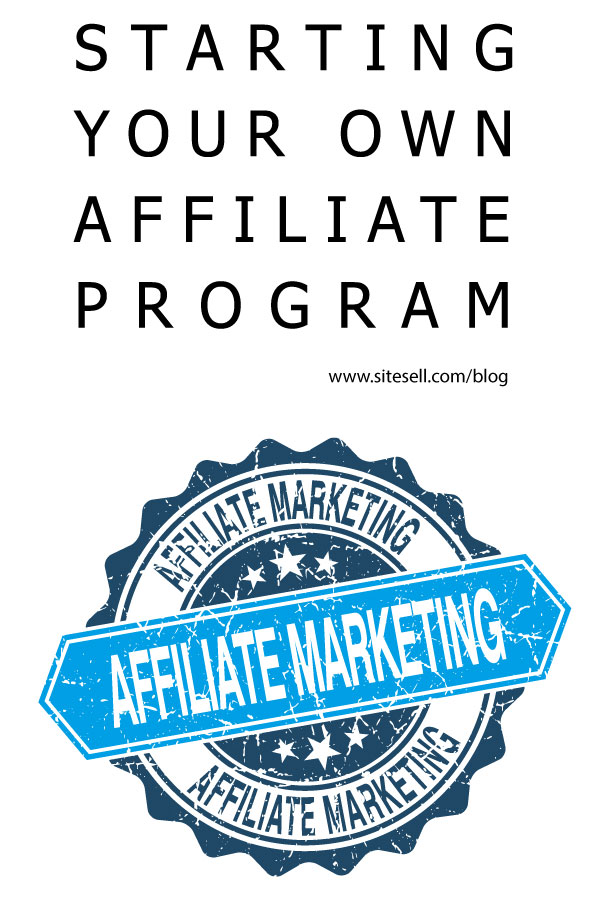If you’re an online business owner with a monetization mix that includes selling your own products as well as marketing other products through affiliate programs, then you understand the importance of diversification. But have you ever considered starting your own affiliate program where other people market your products for you? Starting and running even small affiliate programs is rapidly growing in popularity among solopreneurs.
Now, some would argue that it’s much easier to sell a product as an affiliate marketer than to run your own affiliate program where you have to spend time teaching people how to sell your products (along with a myriad of other management tasks). While that may be true to some degree, starting your own affiliate program could potentially help you not only increase your own product sales considerably, but also surpass your earnings on products you market via other affiliate programs too.
In today’s post we’ll cover the basics of what it takes to start an affiliate program where affiliate marketers promote your products for you.
It’s fairly easy to get an affiliate program up and running, either within an affiliate network or by using program management software or WordPress affiliate CRM plugins.
While an affiliate program can help you take your product sales to levels you never dreamed of, keep in mind that as the program grows, so does the time needed to be spent on attracting affiliates to it, monitoring their activity and keeping the program up to date. You’ll have to weigh the pros and cons as to whether you can afford to turn your attention to managing a program or if it would be smarter to hire an Outsourced Program Manager (OPM) to do if for you.
How you go about starting your own program will depend on what type of products you’re selling and the network, software or plugin you choose to run it with. Below is a list of just some of the high level decisions you’ll need to consider…
- Product type – physical product, ebooks, SaaS, etc
- Platform – the technology where you’ll run your program
- Commission structure – usually a percentage you’ll pay affiliates
- Sales landing page – proper structure and one that converts well
- Marketing material – to help your affiliates marketing well
- Affiliate recruitment – how you will attract affiliates to your program
- Communication – how you will communicate and frequency
Product Type
If you’re selling a physical product you’ll want to make sure it is the highest quality possible and something affiliates will be excited about promoting. Successful affiliates use the products they promote, or at least conduct extensive due diligence on them before recommending them. What they promote is a reflection on themselves. They need to protect the trust they’ve built with their own audience so they’ll only promote products they believe in and stand behind. Make sure your products meet these expectations.
Platform
Affiliate programs are typically managed within an Affiliate Network or In House.
Affiliate Network
Networks are essentially aggregators with many affiliate programs. A few of the more popular networks include ShareASale, Avangate and CJ by Conversant. Review this recent list of the Top Affiliate Networks to learn about what each one offers that sets them apart from each other. Over the past 5 years, affiliate marketers have increasingly been gravitating to networks where they can manage all the programs they promote under one roof.
In House
A second alternative would be to purchase Affiliate Program Management Software and set up your program “in house”. Software examples include Post Affiliate Pro or iDev Affiliate. There are pros and cons for running a program in house, the most notable one being the time you’ll need to spend attracting affiliates to your program will likely be more than it will be within a network.
Commission Structure
Think about how much you are willing to pay your affiliates on sales of your product. Commissions are usually paid as a percentage of a sale or a flat rate per sale. However, in recent years commissions are being more creatively structured as well as have extra incentives built in. In order to get a general idea of what commissions to pay on your product sales, research what other products are paying and set your commissions so they are competitive with what other programs are paying and will be attractive and incentivizing to affiliates.
Sales Landing Page
One of the first places affiliates who are checking out your program will go to is your sales landing page. It’s critical to make a great first impression here, not only to keep affiliates interested, but also to convert sales – which of course will help keep them interested. Pay attention to the design, layout, usability and order process, and make sure everything is working well. Always be working to optimize and improve your landing pages to help increase conversion rates. Look for industry average Conversion Rate metrics for similar type products and make it an ongoing goal to continually be working to make your landing page the best it can be.
Marketing Material
Affiliates will want to have banners, image ads, videos, text links, content starters and any other marketing resources that will help them build high converting promotions. It’s important not to skimp on providing quality resources. When an affiliate logs into your program, you’ll want to wow them with your marketing material. Keep the resources fresh and relevant, and plan on adding resources for special promotions such as during the holiday season.
Affiliate Recruitment
Perhaps the most challenging part of affiliate program management is recruiting, attracting and motivating affiliates. Affiliate Marketers are independent marketers who cannot be “managed” but when you manage your program well and incentivize them, they’ll in turn be motivated to give your products their efforts. If you go the in-house or self managed program route, you’ll need to spend considerable time recruiting strong affiliates into your program. Networks on the other hand have the advantage of having affiliates already a part of the network who are actively seeking out quality programs and products to promote. In other words, you have affiliates finding you in addition to you finding them. You’ll still want to actively recruit outside the network but this is one of the biggest advantages of a networked program.
Communication
Once affiliates start joining your program, ongoing communication is key. You can reach out to affiliates directly via email or private message on various social platforms. Plan to send regular newsletters that include helpful marketing strategies, important news about your products and upcoming special promotions. Some affiliate program manager’s blog regularly to their affiliates. Others use Twitter, Facebook and other social channels to communicate. Choose a few primary ways to get information out to your affiliates and do it well. Affiliate marketers are very busy and the great ones receive invitations to join programs all the time. You want to keep their attention on your program and the best way to do that is by covering all the points above as comprehensively as you can.
Wrap Up
Now that you have learned about the basics of what it takes to start an affiliate program, take time to weigh the pros and cons before making the decision to do so. Starting a program is not that difficult but managing a program well is hard work and time consuming. But the rewards will soon follow if you give your program and your affiliates the time and energy they require.
Join the SiteSell affiliate program, recommend SBI! and SBI! for WP as the best options building an online business and earn great commissions!
Receive more articles such as this to help you succeed as a solopreneur.



Latest posts by SiteSell Affiliate Program (see all)
- Starting Your Own Affiliate Program - August 31, 2015
- Personal Freedom – A Dream Or A Mindset? - July 22, 2015
- Top Affiliate Marketing Tips - March 27, 2015


